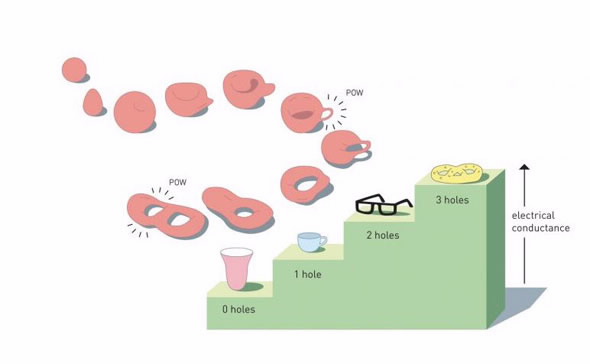ANSTO congratulates the the Canadian Neutron Beam Centre (CNBC) for their contribution to experiments that confirmed one of the theoretical predictions of this year’s winners of the Nobel Prize in Physics.
The Canadian Institute for Neutron Scattering provided the following information on their website with resources from the Nobel Foundation:
The 2016 prize was awarded to American physicists born in the UK for theoretical discoveries in quantum materials: David J. Thouless, F. Duncan M. Haldane, and J. Michael Kosterlitz.
Advances in our understanding of materials requires both theory and experiment. This year’s prize winners used advanced mathematics to predict the behaviour of materials that challenged conventional thinking. However, the predictions of theorists must be confirmed by experiments before the scientific community fully accepts them. Furthermore, it is often many years later that the full value their achievements is recognized.
In the 1970’s and 80’s, they challenged our understanding of how materials conduct electricity and made major contributions to understanding of superconductivity, a phenomena where some materials lose all their electrical resistance at very cold temperatures.
The models of Thouless, Haldane, and Kosterlitz used a branch of mathematics called ‘topology’ to predict strange phenomena in ‘flat worlds’ – in extremely thin layers of materials that can be considered two-dimensional, or even one-dimensional.
 |
| Topological materials are those whose properties that change step-wise, like the number of holes in the above objects. Topology explains why electrical conductivity inside thin layers changes in integer steps. (Nobel Foundation) |
In 1982, Duncan Haldane predicted that the properties of one-dimensional chains of magnetic atoms would have different properties depending on whether their atomic spins contained an even or odd number of electrons, the two types allowed by quantum physics. His prediction, that an energy gap, known as the “Haldane gap”, would form for integral values of the spin but not for half-integer spins, led to the first example of a new type of material found as a result of using topology.
At first, no one believed Haldane because physicists thought these magnetic chains were already understood.
The CNBC’s Bill Buyers, along with Rose Morra, Robin Armstrong, Mike Hogan, and Peter Gerlach, conducted the first experiment in 1985 that confirmed the Haldane gap by studying a cesium nickel halide compound (CsNiCl3) using the neutron beams at the NRU reactor. They performed the study in collaboration with the University of Toronto and the University of Tokyo, Japan.
Since then, the study of topological materials has defined frontline research in condensed matter physics over the last decade, and has led to discoveries of several other unexpected topological states of matter including some in ordinary three-dimensional materials.
For more information, refer to the popular science background on this year’s prize.
Published: 07/10/2016

